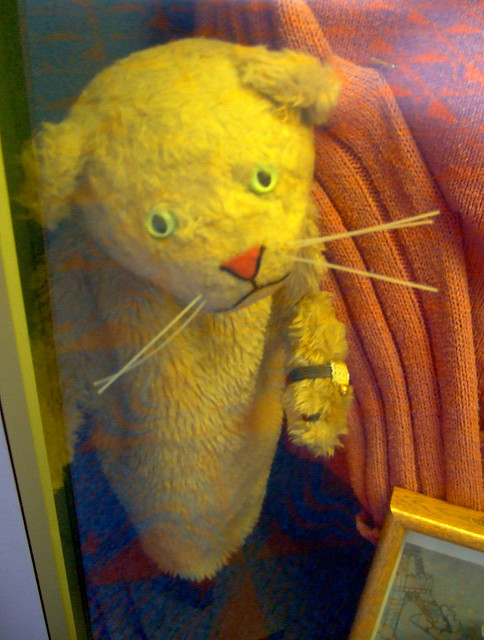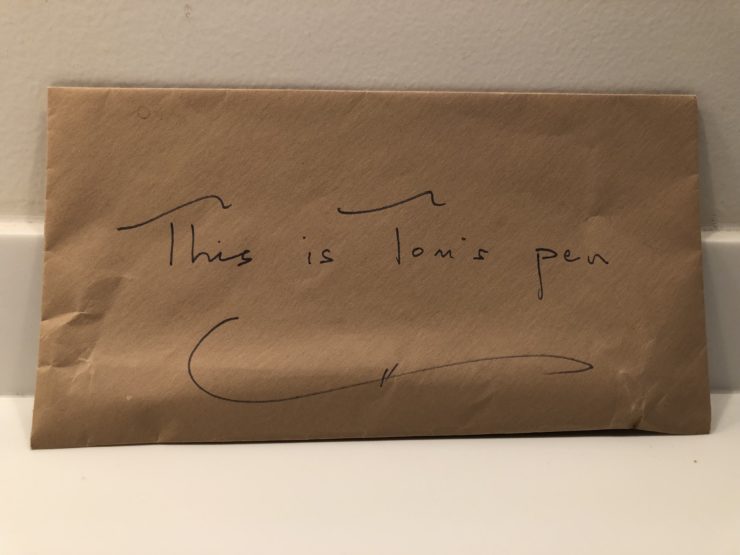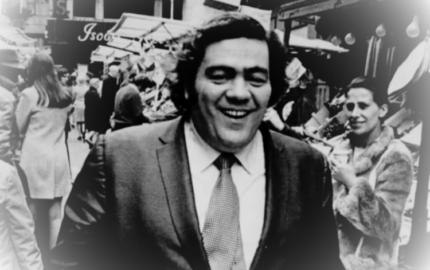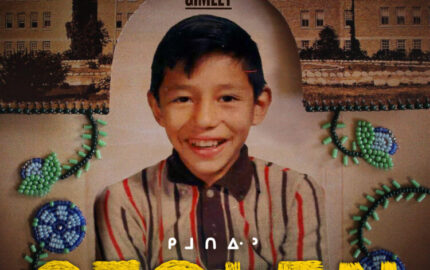Editor's note: We have written about Tom Junod's 1998 Esquire profile of Mister Rogers before. The release of the documentary film, and the climate of the times, prompted us to revisit a piece that has now become a classic.
I first saw “Won’t You Be My Neighbor” — the Fred Rogers documentary — on a Tuesday afternoon a couple weeks ago. I’d been waiting to see it ever since a trailer left me in tears, and because Tom Junod’s “Can You Say… Hero?” published in Esquire in November 1998, has become one of my all-time favorite magazine stories, one that I teach in my feature writing and literary journalism courses.
There were about 15 of us in the theater. As the end credits rolled, I was wiping back tears and could hear sobbing around me. No one rose. We just sat there, all 15 of us, and listened to Mister Rogers sing “You Are Special.” Then the screen went black. Still no one rose. We continued to sit, submerged in a world we had almost forgotten. Only when a theater employee turned on the overhead lights did we stand and drift out of the theater, our eyes red and puffy.
On my drive home, I found myself thinking about the connection between the movie and Junod’s foundational story. Not just because Junod is in the movie. But because that story, now 20 years old, is timeless. As timeless to me as Mister Rogers himself.
First, the movie: I was struck by the prevalence of Mister Rogers’ voice. He is the narrator of this documentary. He transitions us from scene to scene. He lets us into his thoughts and hopes and dreams. At times he speaks in the voice of Daniel the Striped Tiger, but more often he speaks with his own voice.

The movie opens with a black-and-white video of a young Fred Rogers — filmed in 1967, one year before his show hit the airwaves — talking about the idea of modulation and how that would be a good theme for a children’s show. It ends with a university commencement address, when he urges graduates to spend one minute of silence thinking about those who have had a huge impact on their lives. Now, almost 50 years later, that same directive is urged on moviegoers.
It had me thinking about Dr. Alex Koufos, the pediatric oncologist who saved my life when I had leukemia as a teenager, and who himself died of cancer in 1998; of my mom, who took care of me when I was sick and, fortunately, is still alive; and, yes, of Mister Rogers.
Reach back to Junod’s story: In it, the reader feels as though Mister Rogers has been speaking to them for more than 8,000 words. But while the movie drew on hundreds of hours of archival audio — Mister Rogers’ actual voice — Junod had to recreate it in the soundlessness of the written word. To do so, he creates a connection between Mister Rogers and himself; as a reporter, he dares get close enough to serve as a stand-in for the reader. Weaving that subject-reporter-reader connection has become a signature in Junod’s profiles (read the lead to his ESPN: The Magazine piece, “Eugene Monroe Has a Football Problem” for another example), and one of the reasons he is considered one of the great magazine writers of his generation (or, in my estimation, any generation).
In the Mister Rogers profile, Junod’s first name appears in direct quotes from Mister Rogers 17 times. Throughout the story, the reader sees “Tom.” But it’s not hard to feel that Mister Rogers is talking directly to you, that the word he speaks spell the letters of your name. I had gone to the movie a second time, and was so taken that I called him to talk about the connection between it and his story.
“I definitely tried to capture his voice, and that personalization of his voice is very much a part of how he spoke,” Junod told me. “When you spend time with somebody, especially when that person is as extraordinary as Fred, you want to somehow not fail the extraordinary nature of those transactions, the extraordinary nature of that person. You don’t want to destroy it, to do this sort of conventional thing if the person is extraordinary.”
The Esquire profiles starts with Junod reminiscing – in the cadence of Mister Rogers, of course –about Old Rabbit, a raggedy stuffed animal he had as a kid. In the third section of the story, we get more of Junod as he meets Fred Rogers for the first time. As the piece goes on, he shows up again and again – in the locker room as Mister Rogers strips down for a swim (this is where 143 – Mister Rogers code for “I love you,” comes up, something that is also part of the movie), on the subway, in Penn Station, and finally, in a prayer circle with Mister Rogers and a woman named Deb, who was a minister in his church. The latter is a scene that ends the story.
"...you want to somehow not fail the extraordinary nature of those transactions, the extraordinary nature of that person.'
Establishing oneself as a major character is something most journalists are loath to do, but Junod thinks it’s integral to his stories. And, at least in the case of “Can You Say… Hero?,” it’s one reason we are still reading the story 20 years after it was first published.
“I think that is the challenge of, not all journalism, but all longform journalism,” he said when I interviewed him last December for an episode of Gangrey: The Podcast. “You are writing those stories as a testament to the voices of the people that you’re writing about, but you’re also challenging those voices over time and over the length of the story, challenging those voices with your own voice. The stories that interest me are often wrestling matches between writer and subject.”
Junod’s piece is structured primarily around the days that he spent with Mister Rogers. The only glimpses of Mister Rogers’ childhood come through a trip to Latrobe, Pa., when Junod joins Mister Rogers on a visit to his childhood home and then to the cemetery where Mister Rogers’ parents are buried. The structure of the piece, then, is entirely centered around the relationship between Junod and his subject, and Junod’s understanding of how he is being affected by those interactions. Seeing those changes in Junod shows the reader what makes Mister Rogers the person he is known to be.

In the movie, we see how Mister Rogers affected the lives of everyone who came into contact with him, especially those interviewed for the documentary. That includes Junod; François Scarborough Clemmons, who played the Neighborhood cop, Officer Clemmons; David Newell, who played Mr. McFeely the mailman; Fred Rogers’ wife Joann Rogers, and their sons, John and James. They all spend time talking about their relationship to the movie’s subject and how he changed their lives.
While Junod’s piece jumps around in time (yet constrained to the days that he is visiting), the movie moves pretty much chronologically, with Mister Rogers leading the way and so many people he worked with and touched reinforcing his lessons and memories. Just about every person who sees the movie has a different part that moves them to tears or, at the very least, makes them start thinking deeply about someone or something in their life.
For me, it was the scene of students from teacher/astronaut Christa McAuliffe’s school watching the explosion of the Space Shuttle Challenger. I was a fourth-grader when the Challenger team was killed, and remember sitting in my science class in Ohio watching the explosion over and over and over again. Immediately after, Mister Rogers spent an entire week in the Neighborhood talking our nation’s children through dealing with death and grief. I was also moved by the scene of Koko the gorilla cuddling up in Mister Rogers lap, perhaps because I once spent some time with Colo the gorilla, when I profiled her for the Columbus Dispatch just before her 50th birthday; and that final scene, where moviegoers are guided to think about people who have shaped their lives.
Junod has seen the movie twice; first at the premier in Pittsburgh and then again with family in Atlanta. The first time he saw it, he said, he, too, was touched by the Koko scene and by the footage of Mister Rogers singing the song “It’s You I Like” with Jeff Erlanger, a quadriplegic, 10-year-old boy.
But the second time he saw the movie, he was moved when Daniel the Striped Tiger, long considered the puppet that most showed Fred Rogers’ true personality, asks, “Am I a mistake?” It was a moment from Mister Rogers’ Neighborhood that focused on all of the self-doubt every child has as they are growing up.
“That just killed me,” Junod said. “It was the vulnerability of children. It was the vulnerability of us all. He really just put his finger on what to me is the unmentionable, unsayable concern, which is not just why am I here, but am I here for the wrong reasons.”
Junod then told me he had been asking himself those same questions 20 years ago when he was reporting the Mister Rogers piece. He had been at Esquire a little more than a year and was struggling with a big question: Who was he as a magazine writer? And with a more immediate one, about a story that was eluding him, a deadline profile of then-Oakland Raiders quarterback Jeff George.
“I couldn’t write it because I was coming from such a bad place in regard to what I was trying to do as a writer at that time,” he said. “I was trying to take Jeff George down. I was trying to use Jeff George as a symbol for everything that was wrong with the NFL. It was brutal.”
"What Fred taught me is you can be a good writer and an effective writer and a penetrating writer, and you didn’t have to be an asshole.”
But then Mister Rogers happened, and the floodgates opened. He wrote the George piece (“It wasn’t a story I was particularly proud of, but I did do it, and I didn’t disgrace myself doing it.”), and then he wrote “Can You Say… Hero?” and found a way to connect the voices he was always experimenting with to an entire generation of people, so much so that his story helped inspire a documentary, and come next summer, a feature film starring Tom Hanks.
“What Fred taught me is you can be a good writer and an effective writer and a penetrating writer, and you didn’t have to be an asshole,” Junod said. “I think that was really the most important thing. You could revere somebody, and yet you could honor yourself.”
That, ultimately, is what the movie does, and what Junod’s story continues to do. Both revere Mister Rogers, but in doing so, they ask the audiences to do what Mister Rogers asked his audiences to do: look inside themselves, see the value there, and then to walk out into the bright sunshine and carry it forth.



